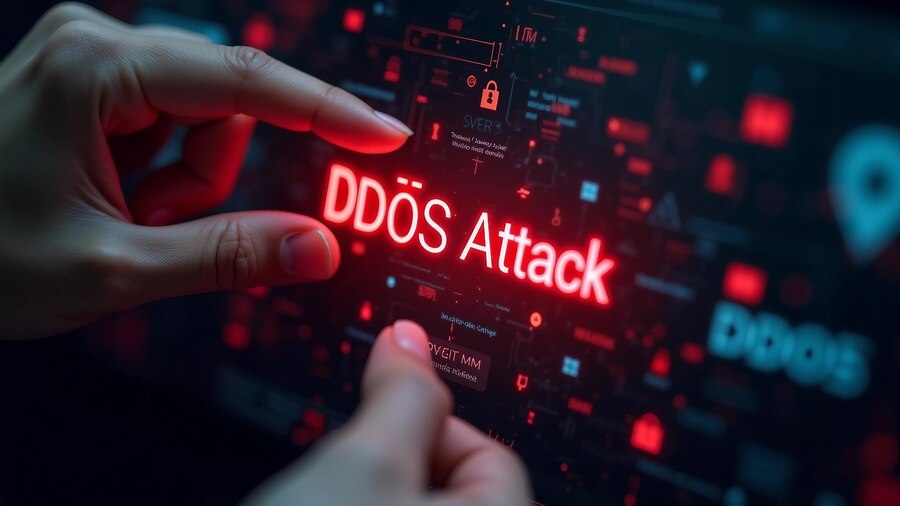Key Takeaways
- Understand the fundamentals of DDoS attacks and their potential impact on businesses.
- Identify the early signs indicating a DDoS attack.
- Implement proactive strategies to prevent DDoS attacks.
- Enhance network security with robust measures to protect against DDoS threats.
- Develop and maintain effective response plans for timely actions during an attack.
- Regularly assess and update security protocols to fortify defenses continually.
In today’s rapidly advancing digital world, businesses are increasingly confronted with various cyber threats, with Distributed Denial of Service (DDoS) attacks emerging as one of the most disruptive. These malicious attempts aim to make online services unavailable by overwhelming them with large volumes of internet traffic. For contemporary enterprises, implementing an effective DDOS mitigation service is crucial to ensuring smooth and uninterrupted business operations and safeguarding customer trust and reputation. As technology evolves, so too does the sophistication and frequency of these attacks, making it imperative for businesses to not only shield their resources but also strategize against potential threats.
Addressing DDoS attacks transcends technical boundaries and becomes a strategic imperative for business continuity. Potential repercussions of an attack include significant revenue loss, erosion of customer trust, reputational damage, and operational downtime. These consequences can ripple through an organization, undermining progress and placing businesses at a competitive disadvantage. As a result, enterprises of all sizes need the insights and tools to mitigate these disruptions and proactively maintain operational resilience.
What Are DDoS Attacks?
DDoS attacks leverage multiple compromised computer systems as unwitting sources of attack traffic, disrupting the targeted service. This scenario is akin to a surprise traffic jam clogging a busy motorway, impeding regular traffic from reaching its destination. These attacks vary widely, from volumetric attacks that flood bandwidth to protocol attacks that target specific applications. Cloudflare describes DDoS attacks as attempts to interrupt or degrade services by overwhelming them with internet traffic. By understanding the different types and methodologies, companies can develop tailored defense and remediation strategies that align with their specific needs, augmenting their capability to withstand such hostile encounters.
Why Are DDoS Attacks Increasing?
Various contributing factors explain the inspired rise of DDoS attacks. The proliferation of connected devices within the expansive Internet of Things (IoT) contributes significantly by increasing the number of vulnerable nodes that can be hijacked to launch attacks. Furthermore, the global shift towards digital business models has made enterprises attractive targets for cybercriminals who seek financial gain or infamy. As businesses grow more web-dependent, their vulnerability to these cyber threats increases, positioning them in a digital arms race. Recognizing these evolving dynamics enables enterprises to formulate comprehensive cybersecurity strategies that adapt to changing threats, ensuring robust and dynamic protection.
Identifying the Signs of a DDoS Attack
Early detection of DDoS signals can be the difference between controlled mitigation and extended disruption. Common signs include overall sluggish network performance, inaccessibility of specific websites, and general service unavailability. Anomalies in network traffic patterns often furnish hints of imminent attacks. For instance, businesses featured in ZDNet experienced considerable downtimes due to delayed detection, highlighting the critical need for immediate recognition and swift response. Rapid awareness and agile response minimize potential damages and reaffirm a company’s commitment to preserving customer experience and maintaining service expectations.
Proactive Strategies to Prevent DDoS Attacks
To effectively deter DDoS attacks, businesses must willingly embrace proactive strategies by incorporating elevated security protocols. This entails maintaining updated applications and servers with the latest patches and closing potential vulnerabilities. Deploying advanced monitoring tools to detect unusual traffic patterns early can prevent consequential disruptions. Utilizing sophisticated detection algorithms capable of understanding typical traffic scenarios and immediately flagging deviations helps thwart potential onsets. By embedding these proactive techniques within their defense infrastructure, businesses equip themselves with the necessary foresight to repel malicious intrusions.
The Role of Robust Network Security Measures
Ensuring robust and scalable network infrastructure is instrumental in defending against DDoS threats. Employing scalable network architectures and leveraging innovative, cloud-based services allows operations to absorb unexpected traffic surges, significantly minimizing service disruptions. Further, incorporating solutions that furnish real-time traffic analysis and comprehensive filtering fortifies defenses against saturation assaults. By adopting agile security mechanisms that foster instant response, enterprises uphold operational continuity and enhance their resilience against today’s dynamic threat landscape with a forward-looking perspective.
Effective Response Plans
While preemptive measures are crucial, having a well-rehearsed response plan ready for execution is equally vital. An effective response protocol encompasses clearly defined roles, responsibilities, and communication pathways to ensure immediate action during an attack window. Agility in these situations curtails potential damages and reflects operational competence to customers and stakeholders. Transparent communications with customers during and post-attack further secure an organization’s integrity, cultivating trust while differentiating them in fiercely competitive markets. Strategic crisis management positions a business to survive and thrive amid adversity.
Regular Security Assessments and Updates
Continuous vigilance remains foundational to both preemptive and remedial DDoS strategies. Regular security assessments offer opportunities to identify and address emerging vulnerabilities before exploitation occurs. Scheduling periodic audits on security systems ensures alignment with the most current guidelines and evolving threats. By habitually evaluating the effectiveness and relevance of their security frameworks, businesses reinforce their operational defenses and amplify their adaptability in the face of constantly shifting cyber threats, underpinning a resilient and secure business environment well-adapted for future challenges.
Conclusion
DDoS attacks represent significant business threats but can be skillfully managed through a fusion of vigilant preemptive measures, timely counteractions, and fortified security infrastructures. By embracing a continuous learning and adaptation culture, businesses can transform these challenges into invaluable opportunities, strengthening their defenses and safeguarding their digital territories. The continuously evolving trends in cyber threats necessitate proactive and informed approaches, as ongoing updates in defense mechanisms remain essential in catalyzing assured operability in the ever-evolving digital world.







